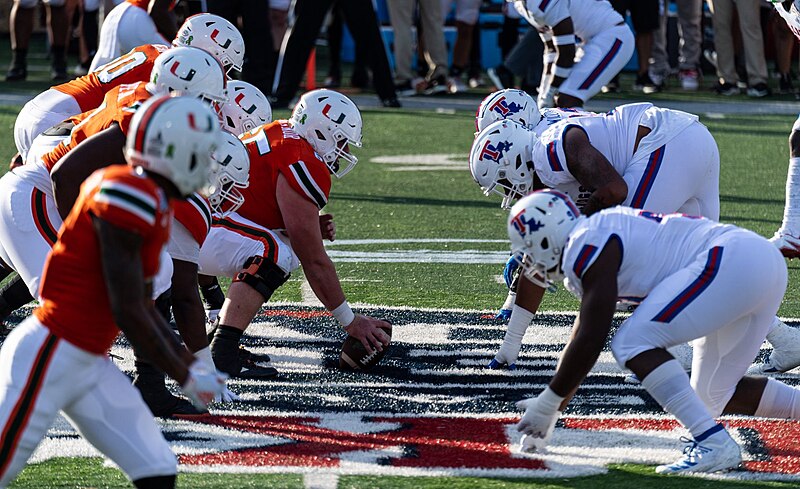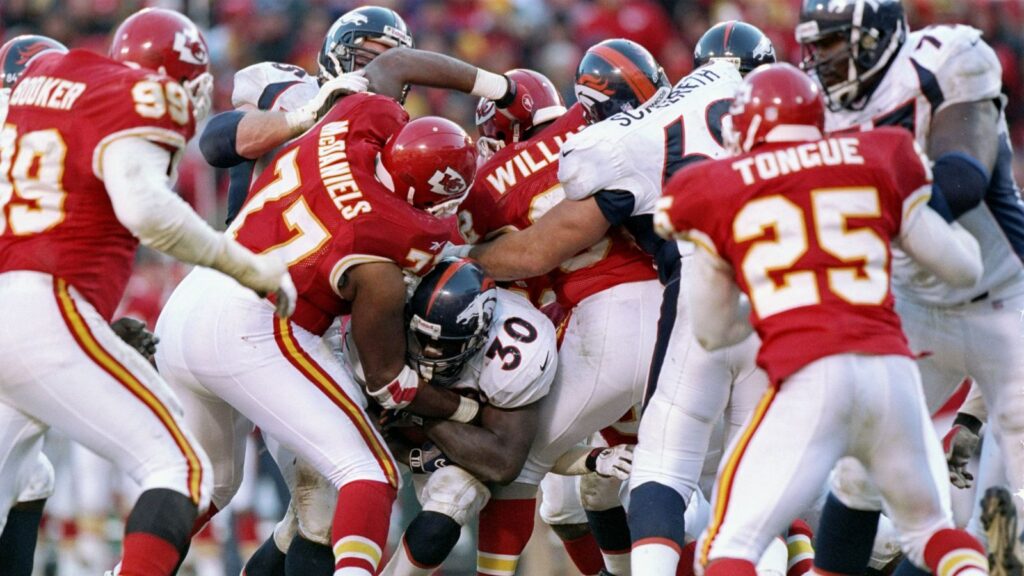Football has come a long way from its early days. Today’s game is filled with fast plays, smart strategies, and clear rules—but it wasn’t always like this. In the 1800s, football looked more like a mix of rugby and soccer, with very few rules and lots of confusion on the field.
One rule changed everything: the line of scrimmage. It might sound like a simple line on the field, but this one innovation changed the game forever.
Let’s dive deep into how the line of scrimmage was invented, what it means, and how it helped build the modern game of American football.
🧍♂️ What Is the Line of Scrimmage?
The line of scrimmage is an imaginary line that stretches across the football field, from one sideline to the other. It’s where each play starts, and no player can cross it before the ball is snapped. The ball is placed on this line, and the offensive team lines up on one side, while the defensive team lines up on the other.
It acts as a “starting line” for each play. Every time a play ends, a new line of scrimmage is set at the spot where the last play finished.
👨🏫 Who Invented the Line of Scrimmage?

The line of scrimmage was invented by Walter Camp, a football player and coach at Yale University. He played from 1876 to 1882 and later became a key figure in changing the rules of the game. Walter Camp is also known as the Father of American Football because of how much he shaped the game we watch today.
Before Camp’s rules, football games were wild and rough. There were no clear formations or starts to plays—just groups of players pushing and shoving in a rugby-style scrum.
Camp saw the need for change. In 1880, he introduced the line of scrimmage to make the game more structured, strategic, and safe.
⚙️ How Did the Line of Scrimmage Change the Game?
The impact of the line of scrimmage was massive. Here’s how it helped evolve football into what we know today:
🔹 1. Clear Start to Every Play
The line gave both teams a clear starting point, making the game easier to watch and understand. No more messy scrums—just organized plays.
🔹 2. Better Player Roles
Once the line of scrimmage was in place, players could have clear positions. This led to the creation of the quarterback, center, wide receiver, and more.
🔹 3. Allowed for New Rules
Camp’s line of scrimmage allowed for other important changes, such as:
- The snap (starting the play)
- The down system (3 tries to move 5 yards, now 4 tries to move 10 yards)
- Forward passing (added years later)
🔹 4. Made Football More Strategic
Now teams could plan complex plays ahead of time, like passing, running, or trick plays—all thanks to starting from a stable line.
🕰️ A Bit of History
Here’s a timeline of how things changed with the invention of the line of scrimmage:
| Year | Event |
| 1876 | Walter Camp joins Yale’s football team |
| 1880 | Camp introduces the line of scrimmage |
| 1882 | He adds the down system |
| 1906 | Forward passing becomes legal |
| Today | These rules are the foundation of modern football |
🤔 Why Was This Rule So Important?

The line of scrimmage made the game:
- Safer – Players weren’t all crashing into each other like in rugby.
- Faster – Plays could happen one after another with little delay.
- Smarter – Teams began using strategy, not just strength.
- Fairer – Both teams start on equal ground, every time.
🌎 Influence on College and Pro Football
After the rule was added in college games, other teams across the U.S. began using it too. Eventually, when the NFL was created in 1920, the line of scrimmage became part of the official rulebook.
Even now, whether you’re watching a high school game or the Super Bowl, every play begins at the line of scrimmage—just as Walter Camp designed it over 140 years ago.
🧠 Fun Fact
Without the line of scrimmage, we wouldn’t have:
- Quarterbacks calling plays
- Offensive and defensive formations
- Huddles before each play
- And probably no fantasy football either!
FAQ’s
1. What is the line of scrimmage in football?
The line of scrimmage is an invisible line on the field where each play starts. It separates the offense from the defense before the ball is snapped.
2. Who invented the line of scrimmage in football?
The line of scrimmage was invented by Walter Camp in 1880. He is known as the “Father of American Football.”
3. Why was the line of scrimmage created?
It was created to make the game more organized and less chaotic than rugby. It allowed for planned plays and better teamwork.
4. How did the line of scrimmage change football?
It helped shape modern football by allowing new rules like the snap, downs system, and team formations to be introduced.
5. When was the line of scrimmage first used in a game?
The line of scrimmage was first used around 1880 in college football games, especially at Yale University.
6. Is the line of scrimmage used in both college and NFL games?
Yes, the line of scrimmage is a key part of football rules at all levels—high school, college, and professional (NFL).
7. What happens if a player crosses the line of scrimmage early?
If a player crosses it before the snap, it’s called a penalty (offside or false start), and the team is moved back a few yards.
8. Did the invention of the line of scrimmage lead to other football rules?
Yes! It paved the way for the quarterback position, the down system, offensive plays, and even forward passing.
Conclusion
The invention of the line of scrimmage was one of the biggest turning points in football history. Thanks to Walter Camp, football went from a rough, confusing game to a fast-paced and tactical sport. His simple idea of starting each play from a fixed line gave birth to the football we all enjoy today. Every time you see players line up for the snap, remember—you’re watching a tradition started back in 1880, and it still works just as well over a century later.



